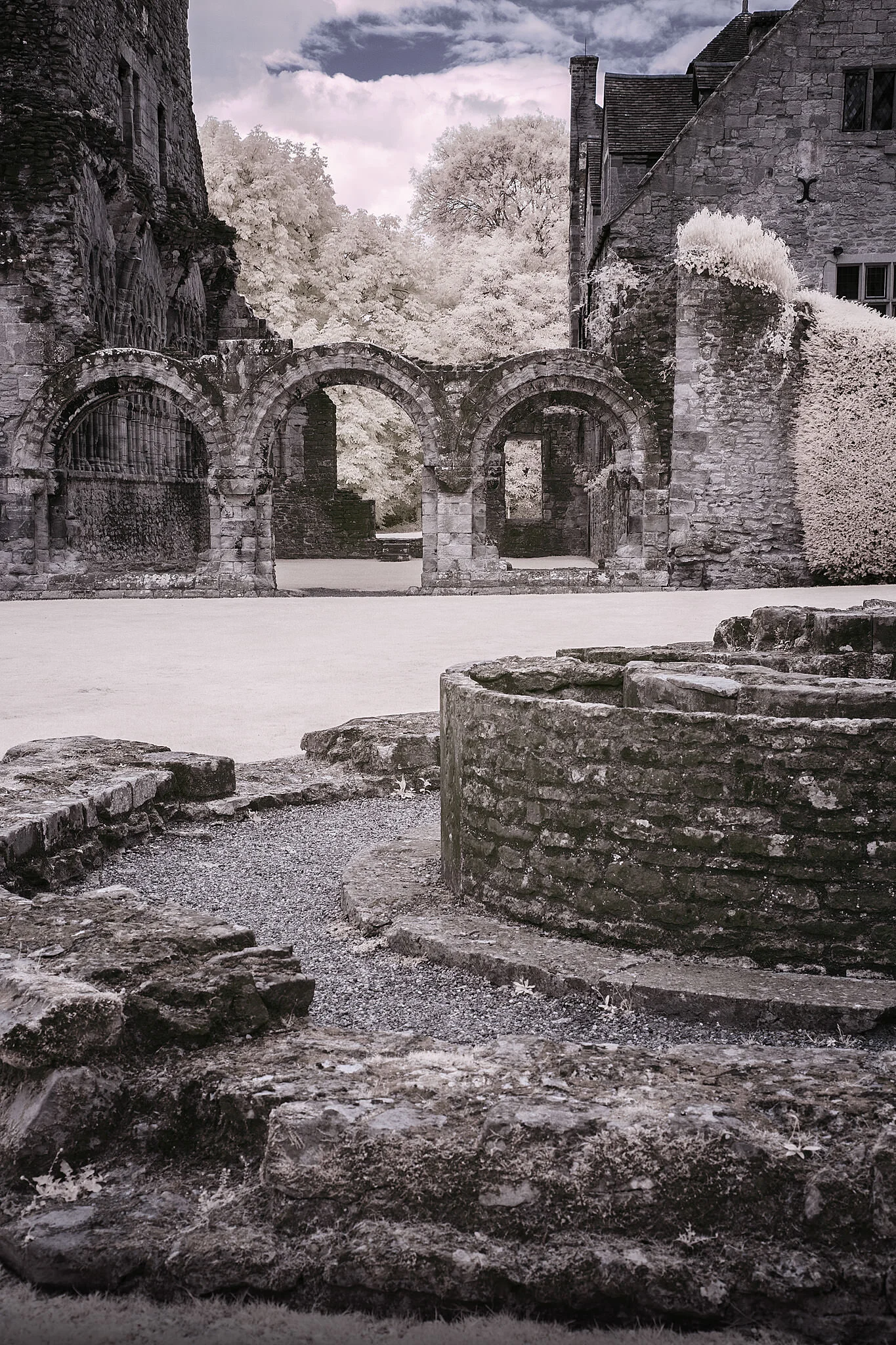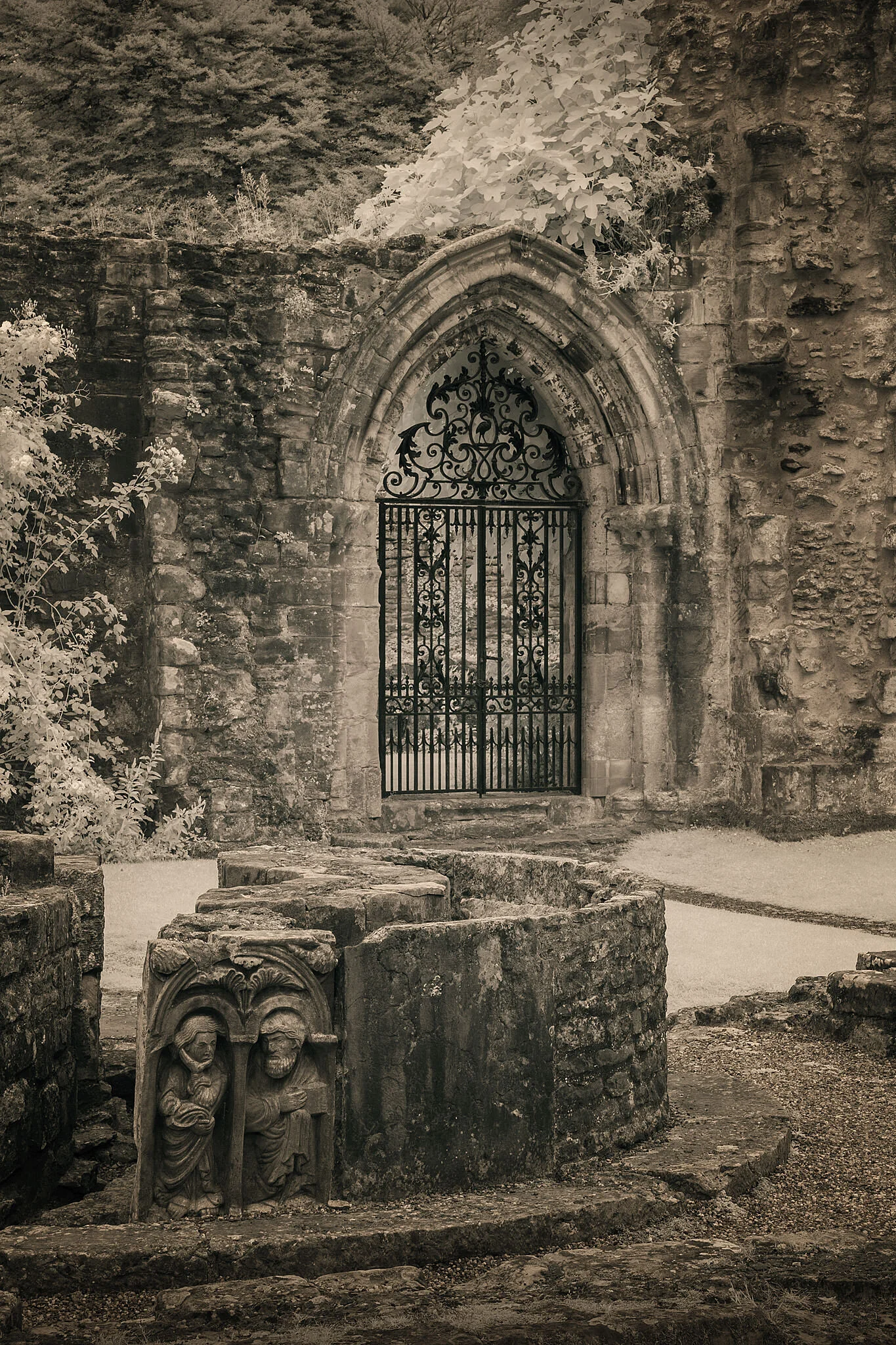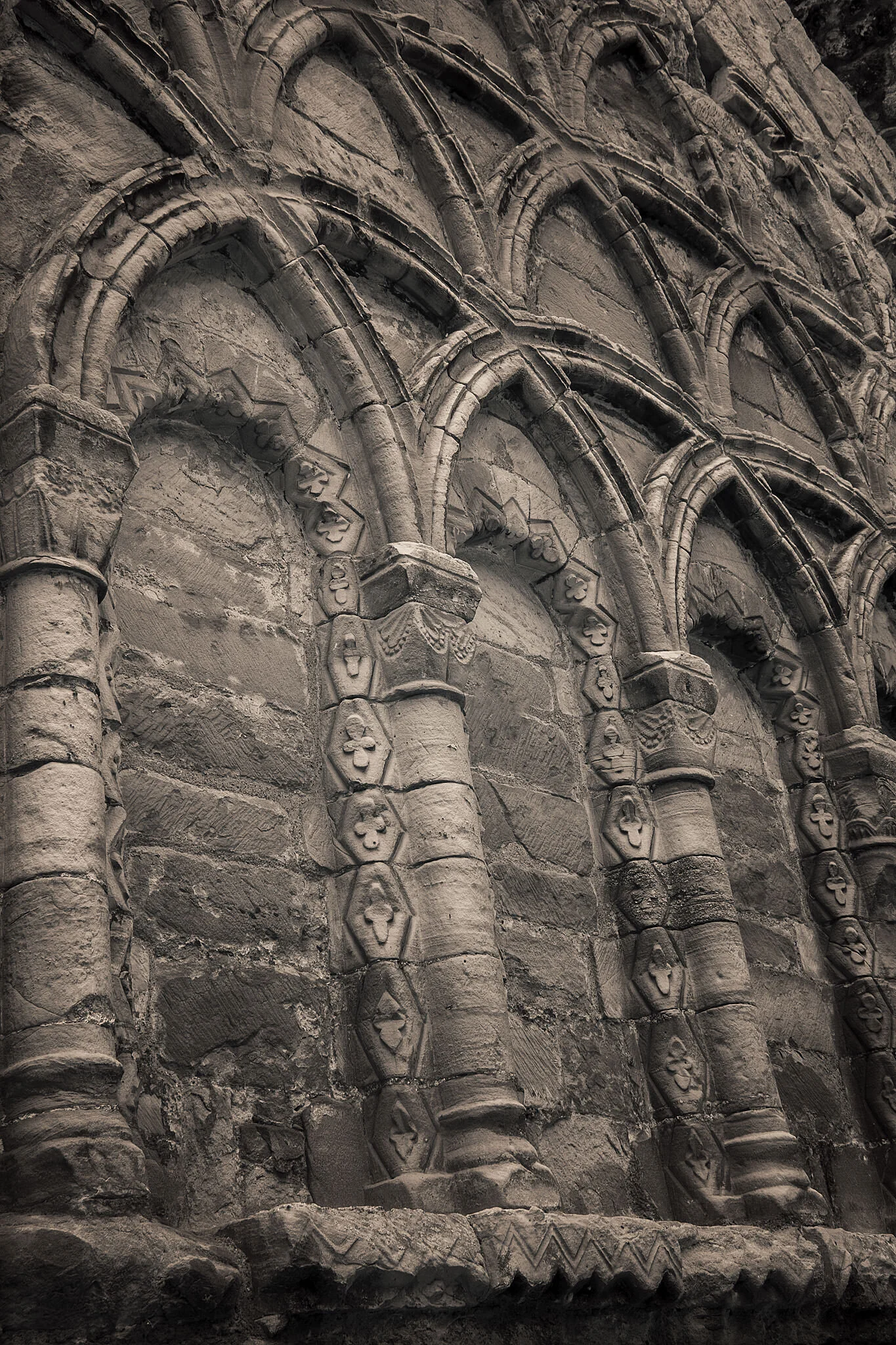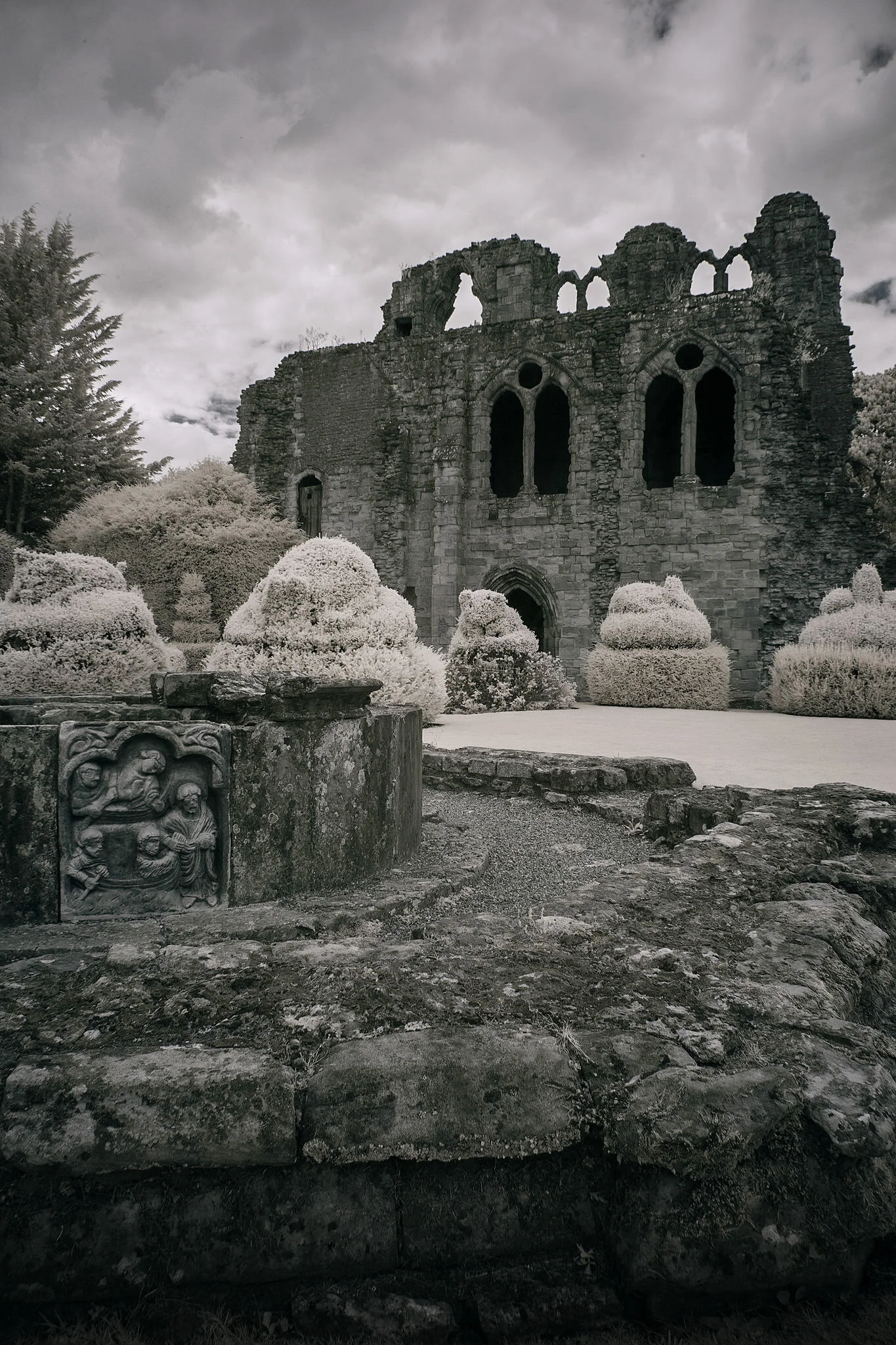Wenlock Priory, West Midlands, England
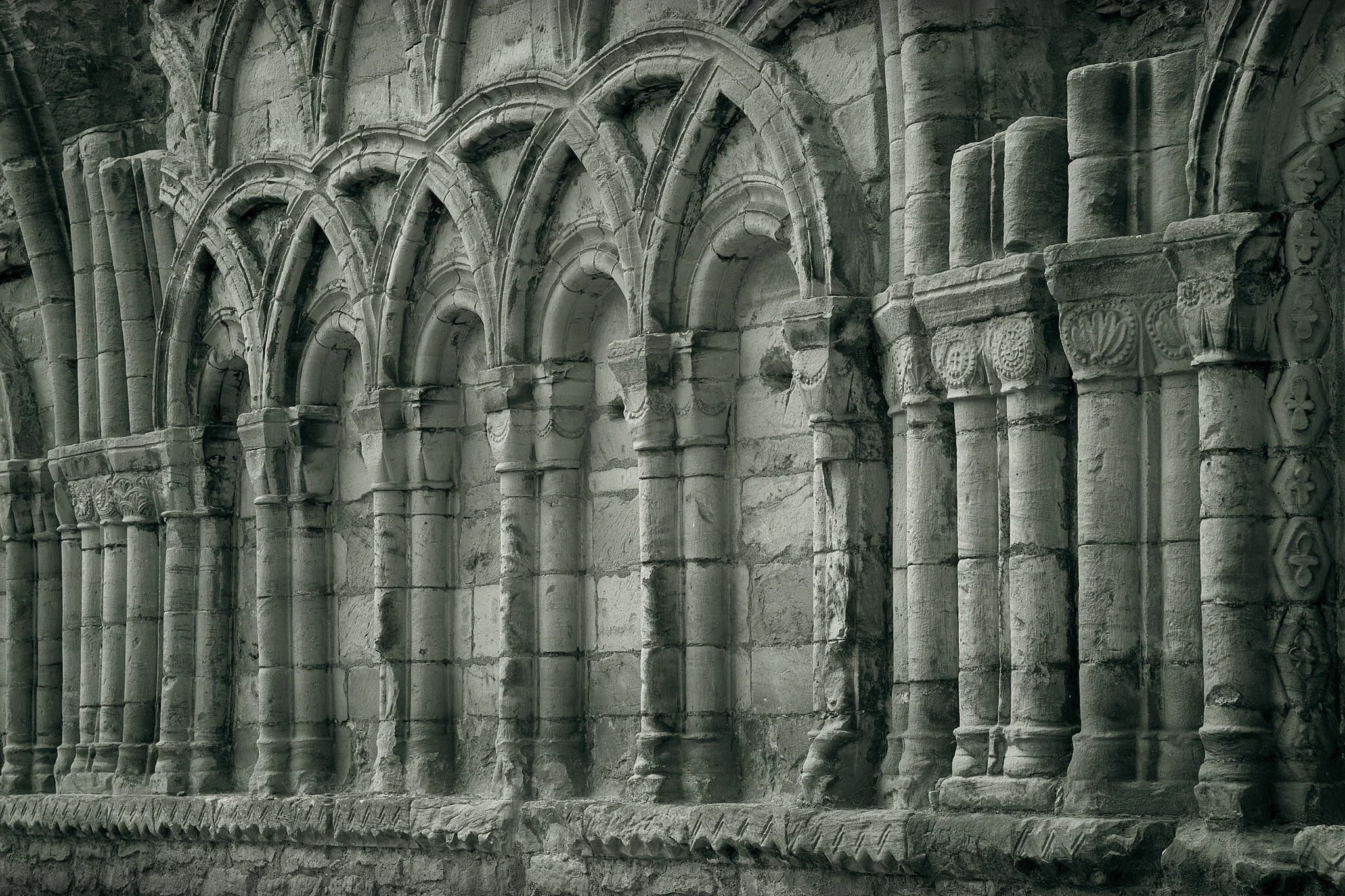
The first monastic house was established at Much Wenlock in 680, by the Saxon King Merewalh of Mercia. This monastery housed both men and women and the second Abbess was the King’s daughter Milburge. Milburge ruled the community for 30 years and after her death she was recognised as a Saint.
In the 9th Century, Mercia was subjected to frequent Viking raids, until they were stopped by King Alfred. Many religious houses were targeted by Viking raiders, because of the wealth they contained. It is thought that the monastery at Wenlock was attacked in 874. However, it survived and continued in some form afterwards.
By the 10th Century, dual monasteries, housing both men and women went out of fashion. Shortly before the Norman Conquest, the monastery was recreated when Earl Leofric of Mercia and his wife Lady Godiva, founded and endowed a new minster church at Much Wenlock. After the invasion of William the Conqueror, he gave the lands in this area to Roger de Montgomery. Roger made a request to the Abbot of Cluny in France, for monks to come to Wenlock and a number of monks were sent in 1080 from La Charite sur Loire, which was a daughter house of Cluny. Wenlock then became a Cluniac Priory, dedicated to St. Milburge and St. Michael.
According to a document found in Lincoln Cathedral in 1101, an old box was found during building work at the church in Wenlock. It contained an ancient document, written in old English, which told of the burial of St. Milburge near the altar. The story goes, that two boys were playing in the church when a pit opened up, revealing the 'beautiful and luminous bones' of St. Milburge. These were then placed in a shrine and stories of miracles were rumoured, and of course encouraged, at a time when to have a shrine and a Saint meant attracting pilgrims who brought monetary offerings with them. Pilgrims then began to come in increasing numbers to visit the shrine and the town began to grow outside the walls of the Priory.
Around 1200, Prior Humbert obtained grants that allowed him to begin the building of a new and larger church. Prior Humbert was a close friend of King Henry III, who was himself very invested in building works. King Henry III often visited and stayed at the Priory. The King gave many grants to the Priory, including the use of timber from the Royal forests.
During the Hundred Years War with France (1337-1453), monastic communities with French connections became known as alien and were subjected to severe taxation and loss of land holdings. Wenlock's connection to Cluny, in France, meant that they were ordered to pay £170 annually to the Crown, this was a very large sum at the time and was an impossible burden on the monastery. Wenlock applied for a charter of ‘denization', to declare itself an English Priory and the charter was obtained in 1395 from King Richard II, for a one off payment of £400 and the agreement that prayers would be said annually on the anniversary of the death of his queen, Anne of Bohemia.
We often have little information on the scandals that sometimes hit the monastic communities. Wenlock Priory was itself not without scandal. In 1417, the outlaws by the name of Sir John Oldcastle and William Careswell, who was a specialist in counterfeiting coins, visited Wenlock Priory where they instructed some of the monks in the art. Sir John then devised a plot to kill King Henry V, and Carewell was arrested after leaving Wenlock. At his trial he incriminated the Prior of Wenlock, John Mar, in the plot but the Prior was eventually acquitted due to lack of evidence.
Wenlock Priory once had a large water lavabo. This was a vessel used by the monks to wash their hands before eating. The easiest way to envision this, is to think of a large fountain, where the top bowl would shoot water out of the sides, into the lower bowl. It was built around 1220 to replace an earlier model and parts of the early version were incorporated into the new. The lavabo was created under roof, in a large octagonal building which housed it. Water was fed into a circular cistern and flowed through the mouths of sixteen carved heads into a shallow trough, where sixteen monks could wash their hands simultaneously. The trough had plugholes for drainage and was supported by a circular base which contained large carved panels, two of which survive. Free-standing lavabos such as this are rare in England and are much more common on the continent.

